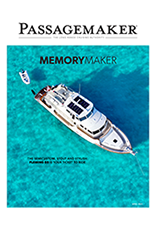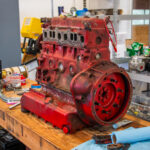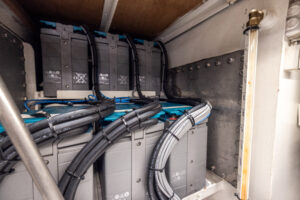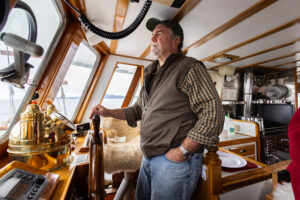Nathan Nelson remembers the day he realized a career in academia wouldn’t be his calling. It was the moment his university advisor asked him to begin a fourth thesis project. Nelson had been studying neuromuscular communication at Oregon Health and Science University, but when he stopped to think about what he wanted to do—in science and in his life—he realized that nothing he enjoyed doing actually required a Ph.D. Even if he stayed in the neuroscience field, he didn’t need a doctorate to do the hands-on research benchwork that he loved so dearly. So he finished his thesis and left the university with a master’s in neuroscience instead of continuing with his doctoral program.

The decision seemed a bit like a midlife crisis, though Nelson was hardly old enough to qualify. He took a systematic (decidedly un-midlife-crisis-like) approach to figuring out his next step. A trained scientist, he began with a list of observations. He jotted down things he found interesting, things he wanted to learn and accomplish. What emerged was a clear interest in carpentry. The same reasons that he enjoyed working at a research bench in a science lab made carpentry an intriguing option. Nelson came across the Northwest School of Wooden Boatbuilding in Port Hadlock, Washington—a mecca of sorts for those in Northwest maritime circles. Perusing the school’s website, he was impressed by the comprehensive curriculum, and the high graduation and job placement rates.
The more he entertained the idea of becoming a boatbuilder, the more evidence he found supporting his hypothesis that it could be a great fit. Nelson always loved boating and was excited to get back on the water after spending so much time in the research lab. He sought an opportunity that would allow him to work with his hands, create something tangible. It didn’t hurt that his home in the Northwest was also a haven for both contemporary and wooden boatbuilding. This new path checked all the boxes. After touring the school, he promptly put down a deposit and secured a spot in the class of 2018.


Back To School
I met Nelson on the campus of the Northwest School of Wooden Boatbuilding (affectionately called “the Boat School”) during a summer open house in 2018. The campus is tucked away among tightly grown evergreens on the shores of Port Townsend Bay, just north of the Port Townsend Canal. A one-lane road cuts through the quaint campus, an eclectic mix of Victorian architecture, unadorned waterfront warehouses, modern industrial buildings, and temporary workspaces. The school’s offices occupy a small waterfront building attached to one shop space and adjacent another, both dedicated to the Contemporary Boatbuilding program. On the overlooking bluff sits a larger building that houses most of the Traditional Wooden Boatbuilding program, along with the new marine systems program. The school is quickly outgrowing these buildings, though, as several boats are currently being constructed and restored in a large steel-framed tent. Recently acquired by the school, the garage of the historic Ajax Café became the varnish shop, and the administration is considering a new capital venture for additional space.

I could see why Nelson fell in love with the place, and I wanted to learn more. A few months later, I met Betsy Davis, the school’s executive director, along the campus waterfront for a tour. Having previously served ten years as executive director of the Center for Wooden Boats in Seattle, Davis was brought in four years ago to transform the Boat School’s curriculum, which had more or less remained unchanged since the school’s founding in 1981. Even in this hub for boatbuilding and marine trades, the school had only limited demand. It also wanted to better serve the local marine community. Davis embarked on a strategic planning process to determine what the school needed to become and how it could get there.

Tools for the Past, Present, and Future

For years, Boat School graduates found jobs in the local maritime field, but the workforce was reaching a point of saturation, even among the hotbed of traditional wooden boatbuilding yards next door in Port Townsend. The school’s advisory board (comprised of boatyard owners, builders, and other marine industry leaders) addressed the issue, redefining the core skills around which the curriculum was based. On Davis’ watch, the school has introduced modern boatbuilding techniques and opportunities to learn other new components of marine service work. Today, the Contemporary Wooden Boatbuilding program curriculum includes fiberglass construction and repair, carbon fiber, vacuum bagging, and other trending practices and technologies.

The school’s newest offering, the Marine Systems program, covers marine electrical, corrosion, plumbing, diesel engines, gas engines, outboard engines, hydraulics, refrigeration, and propulsion, among other topics. The course of study is offered as a six-month diploma program for students, as well as topic-specific, multiweek intensives for maritime professionals. When I toured the Marine Systems classroom, the program had not yet started, but the impressive learning area was ready to go, full of engines and teaching stations. A diesel engine intensive course for marine professionals was already in session.
I sat down with industry veterans Kevin Ritz and Walt Trisdale, who oversee the Marine Systems program. As Trisdale walked me through the different models used for staging marine systems problems, it became clear to me that a program like this could dramatically increase the hireability of the school’s graduates. It’s a program I wish I had access to when I was starting out in the yacht outfitting business.

Later in the afternoon, sitting outside the traditional boatbuilding workshops, the steam box is silent as students inside work on the 18-foot Gartside workboat design. Others are wrapping up personal toolbox projects. These assignments help to fine-tune their finish carpentry skills, which they may someday use to build yacht interiors. From my vantage point, I can look out over Port Hadlock and the surrounding waters. There’s a tangible energy on this campus. It reverberates through the buildings, the administration, the instructors, and the students, who have mastered—or are working to master—the trade. And it’s contagious.

Before heading home, I decide to track down Nelson, who is working away in the contemporary boatbuilding space on his favorite project of the year, the Periwinkle design: a glued lapstrake sail/rowboat. He’s most excited about the boat’s 16-foot birdsmouth mast and is now working on the parrel beads for the gaff spar rigging. I watch as he turns the beads on the lathe, then separates them with a flush-cut saw before drilling out the center for the rigging line.
Just two days after graduating, Nelson began a job with Wind & Oar Boat School in Portland, Oregon. His first project was to guide 12 sixth-graders in building a Bevins skiff entirely with hand tools. Not an easy job, but one for which the Boat School had him well trained.
When we last spoke, Nelson was in Tasmania, Australia, with a crew of alumni from the Boat School, preparing for the Australian Wooden Boat Festival in Hobart—the world’s largest festival of its kind, attracting some 200,000 visitors with more than 550 boats on display. Each event invites a school from abroad to give instruction on regional building techniques. The Northwest School of Wooden Boatbuilding, which this year represents North America, shipped over a partially completed Herreshoff 12.5 Haven sailboat to Tasmania. The school tapped Nelson and several other talented alumni to complete the Haven build and display it as part of the festival.

When he returns, Nelson is set to resume his work at Wind & Oar, teaching the valuable skills and techniques of boatbuilding to schoolchildren. Working with their hands, enjoying the pride and sense of achievement that comes from crafting something, his students will gain a skill set, a knowledge base, a pathway, and a new perspective on life. Most importantly, he’s laying the foundation for the next generation of yachting enthusiasts, crafting the boats of the future—or even the past.











